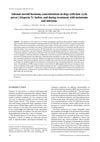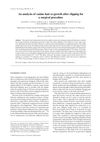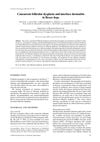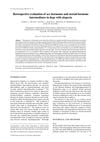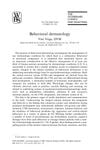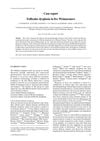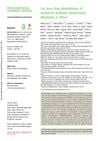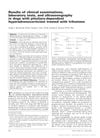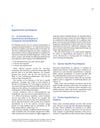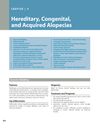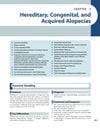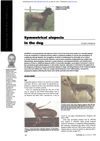Hereditary, Congenital, and Acquired Alopecias in Dogs and Cats
January 2006
in “
Elsevier eBooks
”
alopecia hereditary alopecia congenital alopecia acquired alopecia Canine Hyperadrenocorticism Cushing's disease pituitary dwarfism congenital hypotrichosis color dilution alopecia black hair follicular dysplasia canine pattern baldness idiopathic bald thigh syndrome canine recurrent flank alopecia melatonin feline alopecias anagen defluxion telogen defluxion excessive shedding postclipping alopecia traction alopecia injection reaction alopecia pentoxifylline surgical excision alopecia areata immune-mediated condition feline psychogenic alopecia
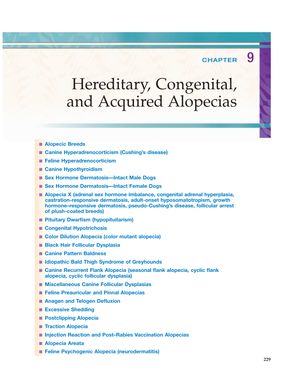
TLDR The conclusion is that different types of hair loss in dogs and cats can be cosmetic or serious, and affected animals should not be bred.
The document from 2006 explores different types of alopecia in dogs and cats, including hereditary, congenital, and acquired forms. It highlights specific conditions such as Canine Hyperadrenocorticism (Cushing's disease), which affects middle-aged to older dogs and is diagnosed through blood tests, urinalysis, and imaging, with an average survival time of 2.5 years post-diagnosis. Other conditions include pituitary dwarfism, congenital hypotrichosis, color dilution alopecia, black hair follicular dysplasia, canine pattern baldness, idiopathic bald thigh syndrome, and canine recurrent flank alopecia. While some conditions like pituitary dwarfism have poor long-term survival prognosis, others are cosmetic with variable treatment outcomes, such as melatonin for canine pattern baldness. The document also discusses feline alopecias, anagen and telogen defluxion, excessive shedding, postclipping alopecia, traction alopecia, and injection reaction alopecia. Injection reaction alopecia may resolve spontaneously or require treatments like pentoxifylline or surgical excision. Alopecia areata, an immune-mediated condition, has no guaranteed treatment, and feline psychogenic alopecia, often stress-induced, may be managed by addressing the underlying stressor. The document emphasizes that while some alopecias are cosmetic, others require specific care, and affected animals should not be bred.
